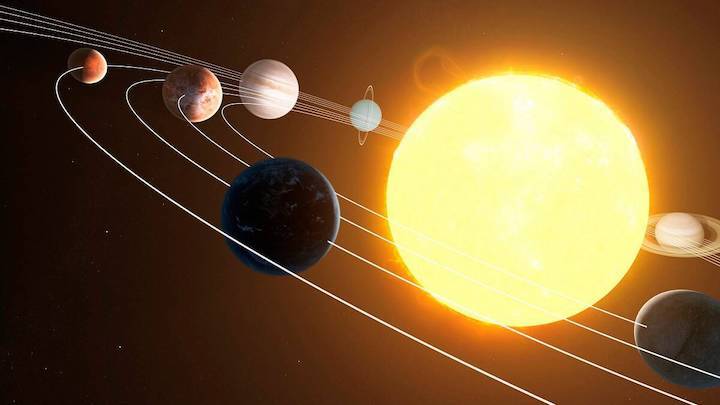29.12.2021
A battle between gravity and rotation gives our planets their shape.

Why are the Sun, the planets and their moons all spherical in shape?
Wait, what? The Earth is actually flat, haven’t you heard?
Kidding! We’ve actually known that the Earth is round for at least 2000 years, thanks to the ancient Greeks. In fact, the vast majority of objects in our solar system are spherical, from the Sun to planets to moons.
So why are planets spherical? Why don’t we live on a cylindrical or cube-shaped planet?
The main culprit is gravity. Every object in the universe with mass exerts a gravitational pull, which tugs towards the object’s centre of mass. For a planet, everything is pulled towards its centre – that’s why things hit the ground when you drop them, and why you land back to Earth when you jump. When the Earth formed 4.6 billion years ago, it was composed of molten material that gravity pulled into a spherical shape, which solidified as the planet cooled.
Some objects in the solar system are too small to be forced into spherical shapes – Mars’ moons, for example, are potato-shaped, and asteroids are mostly irregular.
But not even the planets are perfect. Their shapes are scientifically described as “oblate spheroids”, because they all bulge slightly around the middle (like a mandarin or a semi-inflated soccer ball).
This means that if you walked around the Earth from the North Pole to the South Pole and back, you’d travel about 39,931 kilometres. But if you walked around the equator, you’d travel 40,070 kilometres – pretty close to a perfect sphere, but not quite. Saturn is the bulgiest of all the planets, being more than 10% thicker around the equator than around the poles.

This bulge is a result of rotation. While gravity tries to render planets spherical, the speed of their rotation tries to squash them.
The faster a planet spins, the less round it is. Think of a merry-go-round – when it’s whirling around quickly, it’s hard to stay on at the edges, because centrifugal force is pushing all the outermost mass away. Translate this concept to 3D, and it’s what makes a planet’s equator bulge.
Since the planets rotate at different rates, they’re all different shapes. Saturn is the most non-spherical – squashed – planet because it’s spinning fastest, while the Sun, with its immense gravity and very slow rotation, is almost perfectly round. It really is a battle between gravity and rotation.
(To a lesser degree, the gravitational pull of other objects also makes a difference – for example, the Sun and the Moon alter the Earth’s shape, but only a little.)
Anyway, it’s pretty handy that the planets are spheres. If they were tetrahedrons or toruses or pentagonal prisms, it would be much trickier to make a solar system model…
Quelle: COSMOS
